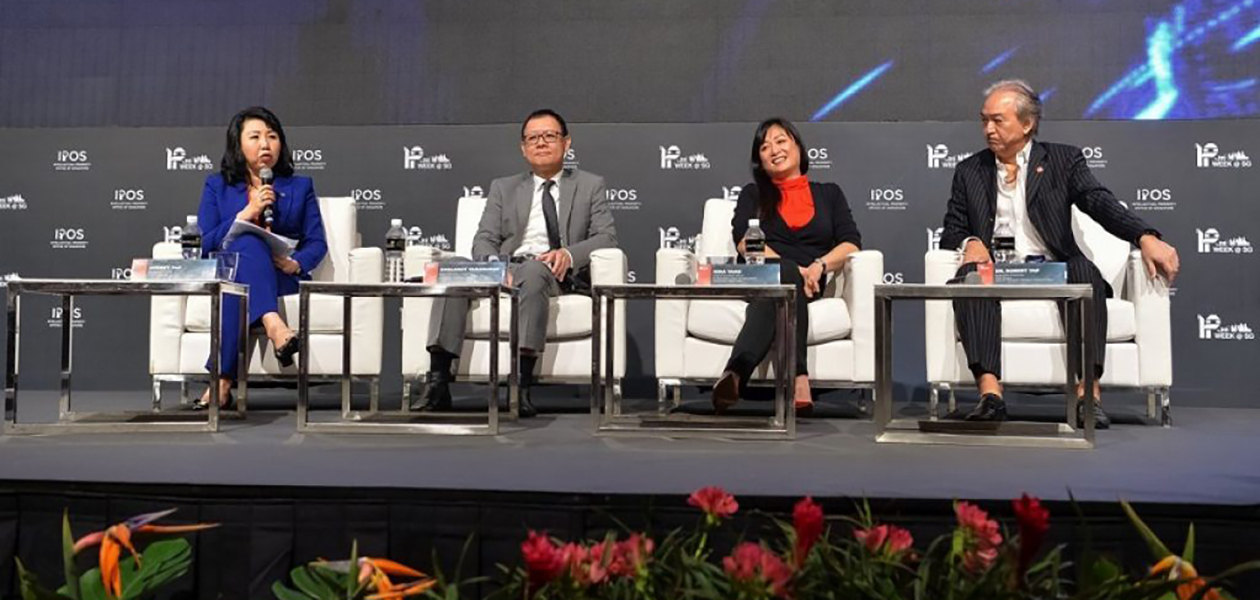Intellectual property in the ASEAN context
Industry experts from the ASEAN region shared their thoughts on the importance of intellectual property and how to make the most of it.
With a combined GDP of close to US$3 trillion, ASEAN is the sixth largest economy in the world and the third largest in Asia. The economic bloc has seen strong gains in recent years, and much of this growth can be attributed to innovation. According to IPOS International’s 2018 technology foresight report, invention output by ASEAN member states rose steadily by 12.5 percent per annum between 2008 and 2013, with corresponding increases in intellectual property (IP) filings.
“The ASEAN Economic Community [formed in 2015] identified IP as a fundamental element of the ASEAN economic blueprint 2025. It recognises IP as a good starting point for member states to encourage innovation as part of a comprehensive package of national and regional economic incentives,” said Audrey Yap Su Ming, Managing Partner of IP law firm Yusarn Audrey, who moderated a discussion on ‘The ASEAN Market: Connectivity in Innovation and IP’ at the recent IP Week @ SG 2018.
Joining her on the panel were Cholanat Yanaranop, Executive Vice President at The Siam Cement Public Company Limited and President of SCG Chemicals; Nina Yang, CEO of Sustainable Urban Development at urban solutions firm Ascendas-Singbridge; and Dr Robert Yap, Executive Chairman at supply chain management company YCH Group and the Chair of the ASEAN Business Advisory Council.
Three B’s to thrive
Beyond just protecting inventors, the panellists highlighted that well-grounded IP ecosystems create a fair environment that enhances public access to a competitive market of goods and services—with incentives that contribute to social well-being and public growth. This allows businesses, entrepreneurs, inventors, artists and creators to flourish, said the panellists.
In such IP-driven ecosystems, Yanaranop has found a strategy that allows his company to thrive. He called it “the 3B’s: build, buy and borrow”.
“[The first step] is to build—this means growing our pool of scientists, researchers and technical people to enable internal research and development (R&D). When we can’t keep pace with the speed of innovation, we then buy,” said Yanaranop, referring to acquiring IP portfolios developed at other firms. “Finally, we collaborate with technical institutions and universities, which allows us to ‘borrow’ their people to [work on] our projects.”
ChIPping in to boost innovation
While the 3B’s are useful from the standpoint of a single well-resourced enterprise, small and medium-sized enterprises (SMEs) or start-ups may need help getting their R&D projects and IP strategies off the ground.
Fortunately, dominant conglomerates are beginning to see the value of investing in innovative smaller firms to co-create IP. For example, Yanaranop’s company set up a corporate venture firm called Adventure that reaches out to and supports aspiring start-ups. By backing creative technological solutions at an early stage and crafting a mutually beneficial IP roadmap with smaller partners, conglomerates stand to gain in the longer term through increased productivity or profits, he said.
On the other hand, Yang noted that support for SMEs need not always take the form of funding. She highlighted how Ascendas-Singbridge is growing the innovation ecosystem by helping smaller firms on its properties find synergies among themselves. With more than 2,600 tenants under its purview, what Ascendas-Singbridge offers is a networking platform for start-ups to forge meaningful collaborations, develop new IP and scale into new markets.
Aligning IP with industry trends
However, Dr Yap cautioned that “if you only protect IP, thinking that it is going to be the core to your future, you are not going to be very successful.” Ms Yap agreed, adding that the important thing is to pay attention to broader trends in the ASEAN region, like increasing connectivity, digitalisation and voluminous data generation.
Yanaranop, for one, believes that data is the new oil. But just like crude oil, data needs to be refined before it can be used. By mining data for insights, companies can go beyond just digital connectivity, to achieve “connectivity with customers”. This in turn drives innovation and IP creation.
“The game [of enterprise] has evolved to include customer insights; it requires a market-back approach, where you start by understanding your customers, assessing your competition and using that information to create a customised technology-backed solution. That is the new way of growing business,” he said.

